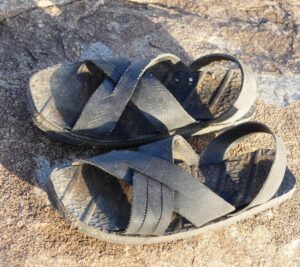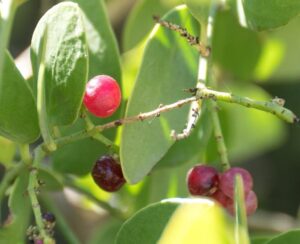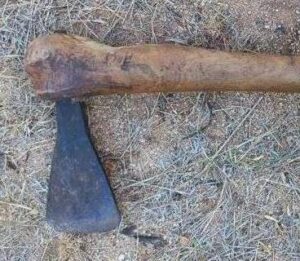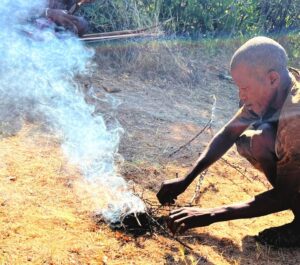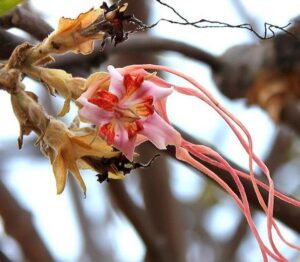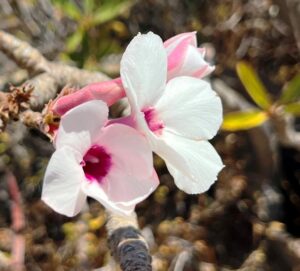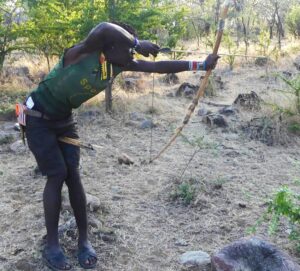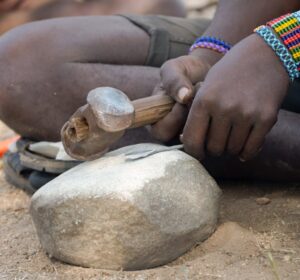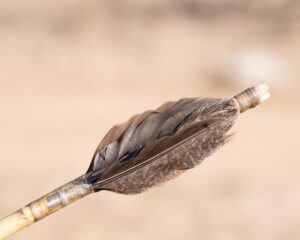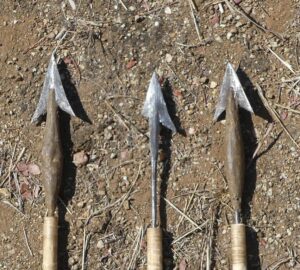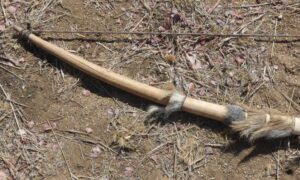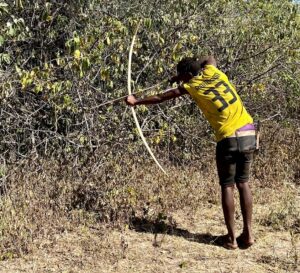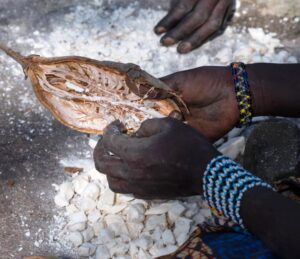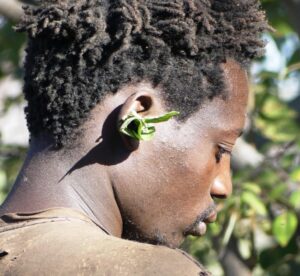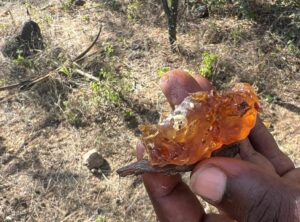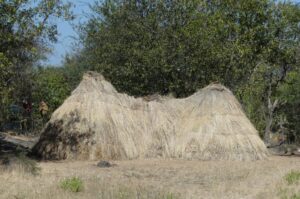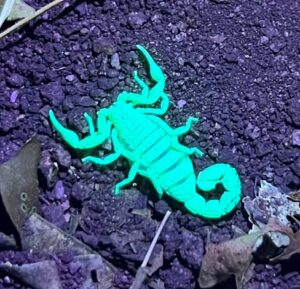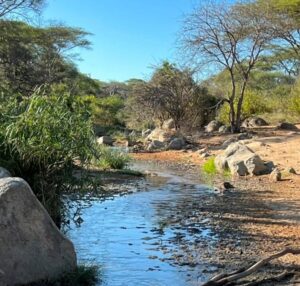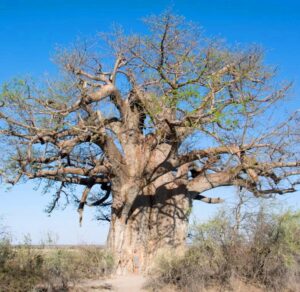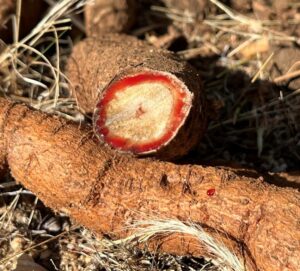Hadza
Hadzabe footwear
Hadzabe people use footwear to protect their feet in their living areas. They need adequate foot protection against thorns, sharp plant blades, and edgy stones, as well as against the heat on sand and rock surfaces. In former times, they…
Fruits eaten by Hadzabe people
Besides honey, meat, Baobab fruits, and tubers, berries are one of the significant food classes that the Hadzabe people eat. Honey is the most important one for both Hadzabe males and females. However, females relish berries as the second most…
Hadzabe Axes
Hadzabe axes are part of the standard outfit of every Hadzabe man living in remote areas. This outfit consists of his bow, a bunch of arrows of various types, a firestick, his knife, and the axe. Additionally, he will carry…
Hadza hand drill friction fire
Hadza hand drill friction fires are the standard fire-making method of the Hadzabe people in Tanzania, who live remotely. They do not have the omnipresent butane gas firelighters of the modern world or any other artificial methods. Even when lighting…
Hadza Arrow Poison – Strophanthus and Acokanthera species
Arrow poison based on Adenium sp. plant extracts was covered in a former article on this website. In the following, we will discuss the second type of poison the Hadzabe people make, which they call Shanjoko, a Strophanthus species. Additionally,…
Hadza Arrow Poison made from Adenium species
Remotely living Hadzabe people use three types of arrow poison to bag big game animals. However, due to the shrinkage in the size of their areas, they currently produce only two kinds. I will describe these arrow poisons briefly to…
Hadza style of shooting bows
Shooting bows by remotely living Hadza boys and men is a daily, necessary affair. From the age of three, they start shooting bent sticks. As youngsters, they are soon required to contribute meat to the family. Through this early and…
Cold-forging of iron arrowheads
The Hadza people, who live in remote areas, produce iron arrowheads themselves. Contrary to what is often mentioned in the literature, they do not buy these iron arrowheads from the Datoga people. Both tribes used different production methods. Whereas the…
Hadzabe arrow shafts and fletchings
Arrow shafts are a piece of Hadza men’s identity. Remotely living Hadza men always carry their bows, arrows, and firesticks. Whenever they have leisure time, they attend to their arrows by building new ones, checking and correcting their straightness, or…
Types of Hadzabe Arrowheads
Hadzabe people use four basic arrowhead types, which are further divided into different styles. All of these types and styles serve specific hunting applications. 1st basic type of Hadzabe arrowheads: Wooden arrow tips These types of arrowheads are called hik’o…
Hadza bows for hunting
Hadza bows are not only used for hunting but are also ubiquitous adornments for nearly all Hadza men. They even carry their bows, arrows, and firesticks around when they are not going to hunt. The bows are often short-lived and…
Hadza hunting techniques
Hadza people in remote areas of Tanzania are one of the last remaining hunter-gatherer tribes in Africa. However, only about 25% of Hadza people live this original hunter-gatherer life. That means, from a total population of about 1300 Hadzabe in…
Baobab seeds and pulp porridge
Baobab seeds and vine roots are staple foods for remotely living Hadza in Tanzania. This article already presented the collection and preparation of vine roots. In the following, we will discuss how to prepare Baobab seeds and their surrounding dry…
Sweat Bees – not a danger, but a nuisance
Correctly named Sweat Bees are Halictid Bees, an extensive and diverse family of bees. These small—to medium-sized bees are often the most common flower visitors and essential pollinators. About one-third of all bee species in East Africa are halictids. However,…
Stingless bee honey collected by Hadza people
The Hadzabe people eagerly collect stingless bee honey all year long. They do this destructively by cutting open the hives in tree hollows, and both honey and brood are harvested and eaten. Foraging on these insects has not significantly affected…
Traditional Hadza camps and huts
Traditional Hadza camps are loose affiliations of relatives, in-laws, and friends. Each camp has a few core members, but most others come and go as they please. If there are conflicts, the feuding parties will resolve them by simply separating…
Hottentotta trilineatus scorpions at Yaeda South in Tanzania
We found Hottentotta trilineatus scorpions when camping on a rocky ridge in the Yaeda South area. The place where we put up our tent was about 2 km / 1.2 miles from the next Hadza camp and in the middle…
Hadza water sources
The Hadzabe (plural of Hadza) natural environments are the escarpments and rocky, wooded hills that form the watersheds for Lake Eyasi and Yaeda Swamp in Tanzania. In this Rift Valley environment, seasonal rainfall changes and surface water availability from runoff…
Climbing a Baobab tree
A Baobab tree (Adansonia digitata) is characteristic of African Savannah biomes. In Tanzania, the Hadza people in the mountainous southern area of Lake Eyasi taught us to climb these trees. Although it is not difficult, knowing the techniques for a…
Wild Sweetpea tubers as food for Hadza people
Wild Sweetpea (Vigna frutescens) tubers are a staple source of starchy food for the Hadza people in Tanzania. The plant’s common name in the Hadza language is //ekwa. To collect them, groups of Hadza women regularly head out into the…

